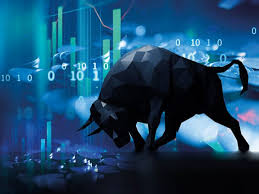ETFs vs. BEES: A Comparative Analysis

The world of investing can feel like a maze of acronyms and jargon. Two options that often pop up are ETFs and BEES, but what exactly are they, and how do they differ? This article cuts through the confusion, explaining these investment options in a clear and concise way.
Unveiling the Basics: ETFs and BEES
- ETFs (Exchange-Traded Funds): Imagine a basket filled with various stocks, bonds, or commodities. That’s essentially an ETF! It trades on a stock exchange just like a single stock, offering a diversified way to invest.
- BEES (Benchmark Exchange Traded Schemes): BEES are a special type of ETF that lives in India. Unlike a general ETF that can invest in anything, BEES focuses on tracking specific indices, particularly those that represent Indian companies.
Why Invest? Goals and Strategies
- ETFs: Diversification is key! ETFs allow you to spread your investment across multiple companies or assets, reducing risk. Plus, they’re generally cheaper than buying individual stocks and trade easily on exchanges.
- BEES: If you’re keen on the Indian market, particularly companies owned by the Indian government, BEES offers a convenient way to gain exposure. It’s like a shortcut to investing in a slice of the Indian economy.
What’s Under the Hood? Asset Composition
- ETFs: The contents of an ETF depend on its focus. There are ETFs that track broad market indices like the S&P 500, others that target specific sectors like technology or healthcare, and even some that invest in commodities like gold.
- BEES: BEES typically track indices that hold shares of Indian companies. For example, Nifty BeES, a popular option, mirrors the Nifty 50 index, which represents the 50 largest companies in India. The specific companies within a BEES depend on the index it tracks.
Where Do You Take Me? Market Exposure and Performance
- ETFs: The beauty of ETFs is their versatility. You can gain exposure to different markets (US, Europe, Asia), sectors (tech, finance, energy), and asset classes (stocks, bonds, commodities) – all through a single ETF.
- BEES: BEES provide targeted exposure to the Indian market, particularly companies the Indian government has a stake in. Their performance is tied to the performance of the underlying index they track. While they might not outperform the broader global market, they offer a way to participate in the growth of Indian companies.
Liquidity Matters: How They Trade
- ETFs: ETFs are generally very liquid, meaning you can easily buy and sell them on a stock exchange throughout the trading day. This makes them a flexible investment option.
- BEES: Traded on Indian stock exchanges, BEES also boasts good liquidity. Similar to ETFs, you can buy and sell them throughout the trading day, ensuring easy entry and exit from your investment.
Risk and Return: A Balancing Act
- ETFs: Diversification helps manage risk in ETFs. However, the overall risk profile depends on the specific ETF’s holdings. For example, an ETF holding volatile tech stocks will carry more risk than one invested in safe-haven government bonds.
- BEES: While BEES offer diversification within the Indian market, they are still exposed to the risks associated with that specific market. Additionally, companies with government ownership might have different risk profiles compared to private companies.
Counting the Cost: Fees and Expenses
- ETFs: ETFs typically have lower fees compared to actively managed mutual funds. These fees, known as expense ratios, cover the costs of managing the ETF.
- BEES: Similar to ETFs, BEES also come with expense ratios. When comparing BEES to other investment options like mutual funds that invest in Indian companies, BEES might offer a cost advantage.
Tax Talk: Implications for Investors
- ETFs: Taxes on ETFs depend on how you hold them and how long you’ve owned them. Capital gains taxes apply to profits from selling ETFs, and dividend distributions might be taxed as income.
- BEES: As with ETFs, taxes on BEES depend on your holding period and how you invest. There might not be any specific tax advantages unique to BEES, but they can potentially offer tax efficiency compared to directly buying individual Indian stocks.
Future Outlook and Trends
- ETFs: The ETF industry is booming, offering ever-increasing options for investors. Expect to see more thematic ETFs focusing on specific trends like clean energy or artificial intelligence. Technological advancements might also lead to lower expense ratios for ETFs.
- BEES: As the Indian economy continues to grow, BEES are likely to remain a popular choice for investors seeking exposure to that market. There might be an increase in BEES that target specific sectors within India, allowing for more focused investment strategies.
Investor Considerations: Building a Well-Rounded Portfolio
ETFs and BEES can be valuable tools for building a well-diversified portfolio. Here are some key points to remember:
- Don’t put all your eggs in one basket: Combine ETFs and BEES with other investments like bonds and cash to create a balanced portfolio that aligns with your risk tolerance and investment goals.
- Do your research: Not all ETFs and BEES are created equal. Understand the specific holdings and investment objectives before putting your money in.
- Seek professional guidance: If you’re unsure about choosing between ETFs and BEES, a financial advisor can help you make informed decisions based on your financial situation.
Conclusion
The world of investing doesn’t have to be intimidating. ETFs and BEES offer convenient and accessible ways to participate in the market. By understanding their functionalities, strengths, and limitations, you can make informed choices to reach your financial goals. Remember, the key is to choose the investment options that best suit your risk tolerance and long-term investment strategy. Now, go forth and conquer the investment landscape!
Frequently Asked Questions
- What is NiftyBeES’s average return? The Nippon India ETF Nifty 50 BeES has shown the following returns across various time periods: 1 year – 61.25% Three years: 91.75% Five-year: 125.98%
- Are ETFs superior to mutual funds? Commodities, bonds, and equities can be held by mutual funds and ETFs. Both have the ability to track indices, but because ETFs trade on exchanges like shares of stock, they are typically more affordable and liquid. Mutual funds only permit transactions once a day and can provide more expensive active management and regulatory monitoring.
- Stocks vs ETFs: which is better to buy? When there is a large deviation of returns from the mean, stock-picking is superior to exchange-traded funds (ETFs). When the return from equities in the sector has a tight dispersion around the mean, exchange-traded funds (ETFs) are preferable over stocks.





